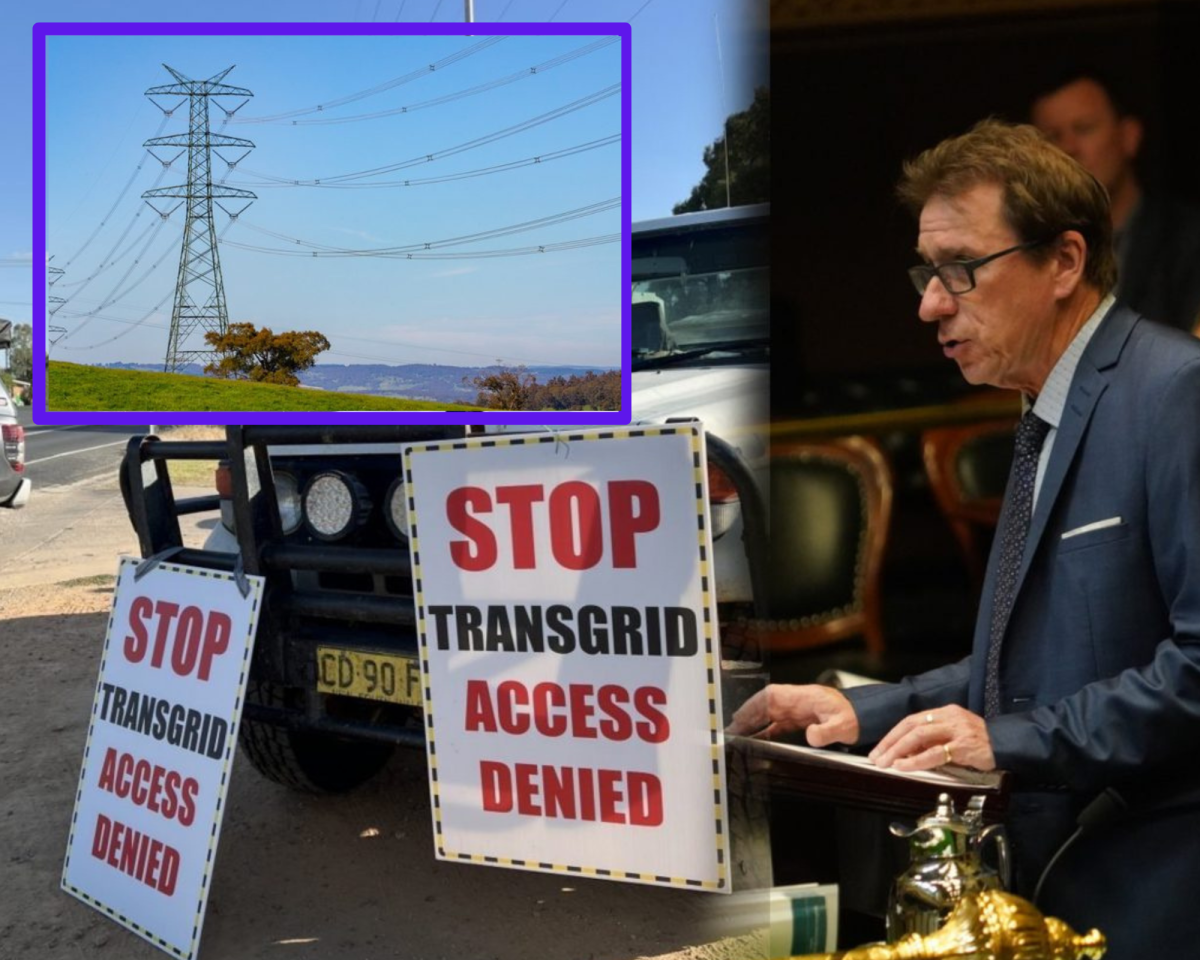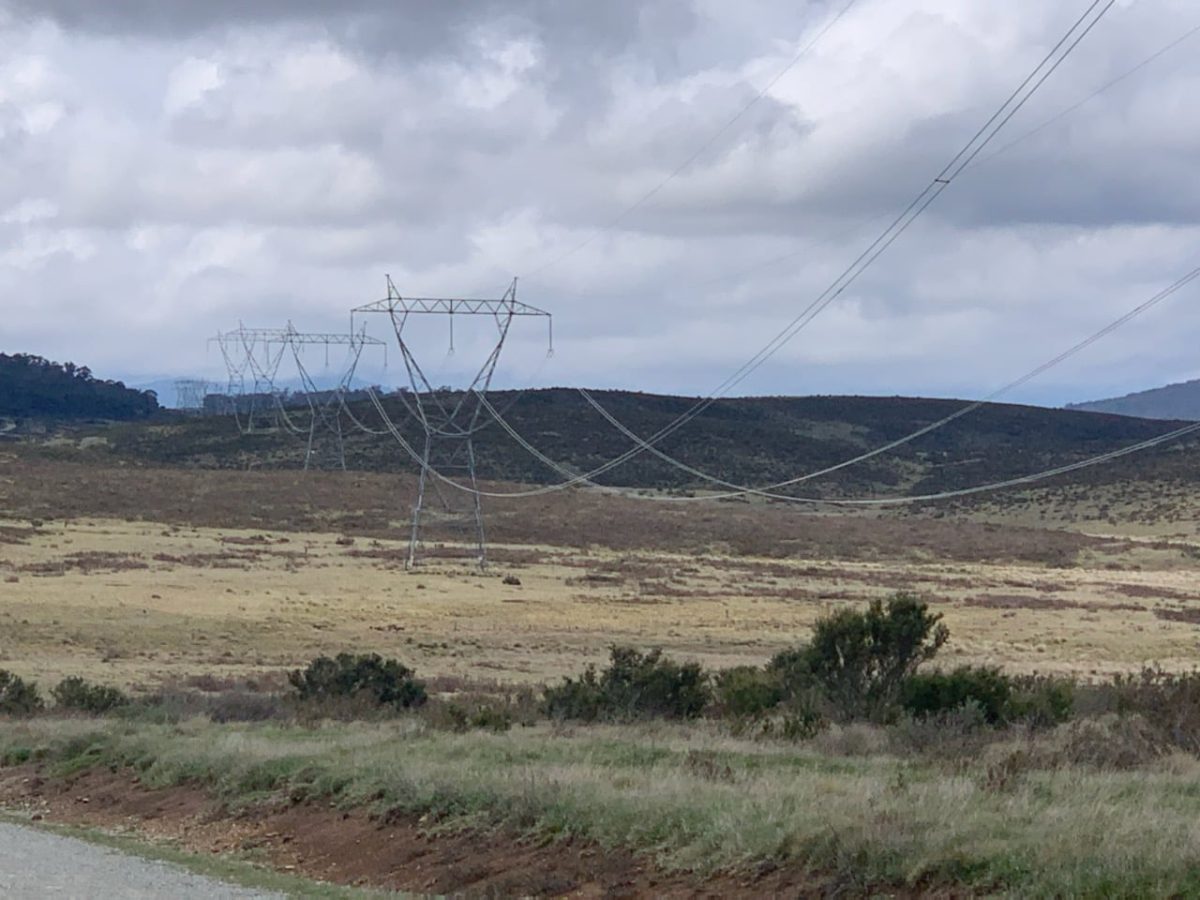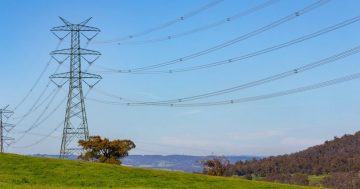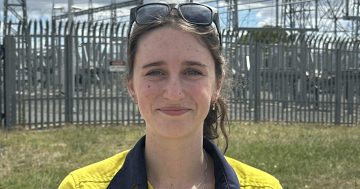
Independent Member for Wagga Wagga Dr Joe McGirr said the community had been ignored. Photo: Transgrid and Chris Roe.
Opponents of TransGrid’s multi-billion-dollar renewable electricity line across southern NSW have expressed their frustration after a new government report gave the thumbs up to overhead wires.
“This entire exercise was pre-determined and a complete sham,” declared farmer and community advocate Michael Katz.
“It was window dressing to hide what has become a process dictated by politics.”
The report by the Legislative Council Standing Committee on State Development examined the feasibility of taking transmission lines underground after fierce opposition from landholders.
Despite concerns over the potential damage to private property, farming and fire risks, the study concluded that HumeLink should proceed as an overhead transmission line project.
“In considering all the evidence, the current plan for constructing HumeLink as a 500 kV overhead transmission line is the correct approach, especially given the applicable regulatory environment and the lack of any action to date in progressing the undergrounding option,” the finding reads.
The report also delivered two recommendations. The first called for “a comprehensive cumulative impact study …before any renewable energy zone (REZ) is declared” and “community consultation on any proposed REZ to start at the scoping stage to allow adequate consideration of viable alternatives”.
The second would see the “creation of an independent ombudsman to oversee consultation and rollout …and to receive and handle complaints about these processes”.

Opponents of the HumeLink overhead lines claim the technology is outdated and dangerous. Photo: Supplied.
Independent Member for Wagga Wagga Dr Joe McGirr originally called for the feasibility study and expressed his disappointment in the decision that he said “lays the ground for more than 10,000 km of transmission lines to scar rural NSW by being installed above ground”.
He said that the community had been ignored and that this would lead to “a rushed job”.
“NSW is poised to adopt cheap and nasty electricity transmission infrastructure that is out of date, dangerous and has no social license,” he said.
“I believe that the current state government has inherited a blind-by-design regulatory framework that fails to serve the interests of communities.
“Governments have outsourced their decision-making to backroom bureaucrats and private corporations where the only thing that really matters is the bottom line.”
In a statement, Transgrid said that the company “remains steadfastly committed to engagement with communities and landowners who are impacted by critical transmission projects” and that they “will continue to work with them, the regulatory authorities and government representatives to collectively find solutions to balance the local impacts, consumer costs, time constraints and concerns regarding supply reliability”.
They went on to highlight the urgency required to complete the project to “secure the grid … and keep the lights on, as ageing coal generation retires”.
It was a sentiment echoed by the Australian Energy Market Operator (AEMO) which today warned that the transition to renewables was not happening quickly enough to avoid “reliability gaps”.
This week, Transgrid also released a 900-page environmental impact statement (EIS) and project director Jeremy Roberts encouraged the community to take a look and provide feedback.
“The EIS is a major step in the planning process for this critical transmission project and it gives people more opportunity to respond on significant issues such as biodiversity, bushfire risk and visual amenity,” he said.
“I encourage all stakeholders to provide their submissions to the NSW Department of Planning and Environment.”
Transgrid will also hold face-to-face community sessions from next week.
Mr Katz questioned the timing of the EIS release and suggested that Transgrid had jumped the gun by moving forward with overhead lines.
“The EIS was conveniently lodged yesterday,” he fumed.
“Clearly, they knew the outcome before it was announced, which is a disgrace.
“It is a slap in the face for the hard-working and caring people of these communities who tried in good faith to offer workable alternative solutions, which were met with disdain.”
Mr Katz declared the battle to be “far from over”.
“One day, they might catch up with the thinking of technology-savvy countries like Germany, which now has undergrounding as the default option for new transmission lines,” he said.
You can read the full report here. The HumeLink EIS will remain on exhibition until Wednesday, 27 September; you can read it here.
Original Article published by Chris Roe on Region Riverina.









